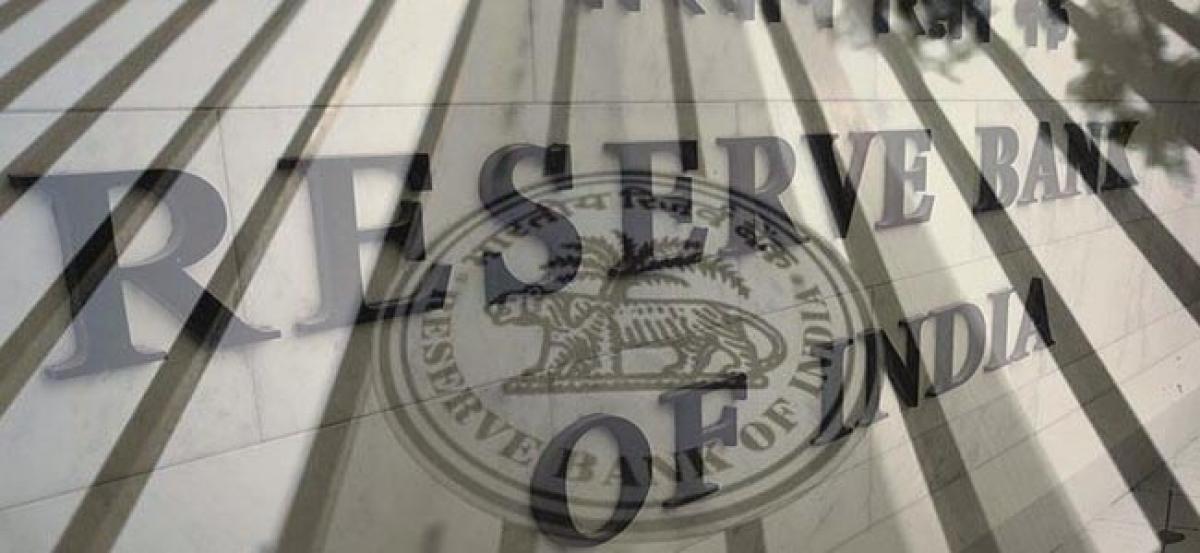Live
- Love, murder, cover-up: Married man kills live-in partner, sets body on fire
- Kishida launches new group within ruling LDP: Report
- Shreya Ghoshal to perform in 'Tripura Tourism Promo Fest'
- Congress lost its stature as brand, now just a regional party: Kangana
- Abu Dhabi T10: New York Strikers reflect on dominant bowling display in win over Bangla Tigers
- VHP Karnataka Resolves to Oppose Alleged Land Encroachments Under Wakf Board
- Formula 1: Verstappen claims fourth drivers' title as Russell leads Mercedes 1-2 in Las Vegas
- Air quality in Kolkata, Howrah deteriorates
- IPL 2025 Auction: Aim is to make Punjab Kings one of the powerhouses, says head coach Ricky Ponting
- PM Modi to participate in ‘Odisha Parba 2024’ today
Just In

In a move that that would spur growth and improve overall sentiment, the Reserve Bank of India on Tuesday cut key interest rates by 25 basis points. As consequence, the repo rate, at which RBI lends funds to commercial banks, now stands a six-year low of 6.25 per cent, down from 6.50 per cent earlier. The reverse repo rate or the interest rate at which RBI borrows funds from commercial banks, has
In a move that that would spur growth and improve overall sentiment, the Reserve Bank of India on Tuesday cut key interest rates by 25 basis points. As consequence, the repo rate, at which RBI lends funds to commercial banks, now stands a six-year low of 6.25 per cent, down from 6.50 per cent earlier. The reverse repo rate or the interest rate at which RBI borrows funds from commercial banks, has come down to 5.75 per cent from 6 per cent.
This first rate cut from the apex bank in the last six months is unique in the sense that it was decided by the Monetary Policy Committee, now popular in financial circles as MPC, not by the RBI Governor as in the past. Of course, RBI has a fair representation in the six-member MPC with three members, including the apex bank chief who has the casting vote in the event of a tie. The Central government has nominated the remaining three.
The committee had deliberated for two days before taking a unanimous decision to cut rates, thereby turning loans cheaper. “We had intense discussions laced with presentations for two days and six members voted in favour of the monetary policy decisions,” RBI Governor Urjit R Patel, said after the policy announcement, letting the world know that all the members are on the same page as for as the RBI policy initiatives are concerned.
Incidentally, it was Patel’s first monetary policy review after he took over the reins of the apex bank from his predecessor, Raghuram Rajan, last month. And Patel began his tenure on a positive note by cutting interest rates and rooting for an accelerated growth in his first review itself. He also cited weakness in global growth and mixed signals from the US economy among the reasons behind the policy moves.
However, domestic economic data also made his and the MPC’s task easier. Retail inflation, based on the Consumer Price Index (CPI), cooled to a five-month low of 5.05 per cent in August this year, thanks mainly to the lower upswing in vegetable and food prices.
It was at a two-year high of 6.07 per cent in July, and at 3.74 per cent a year ago. There is a contrasting trend though. The wholesale inflation rose to 3.74 per cent in the same month from 3.55 per cent in July. It stood at (-) 5.06 per cent a year ago.
The country’s factory output - measured as the Index of Industrial Production (IIP) - declined by 2.4 per cent in July this year after a positive growth in June (1.9 per cent) and May. A 3.4 per cent dip in the manufacturing sector played the spoilsport, prompting industry bodies to demand a rate cut. The fall in inflation coupled with the IIP contraction gave enough head room for the RBI to go for the cut as the retail inflation remained within its medium-term target of 4 per cent with +/- 2 per cent.
The rate cut apart, the RBI chief also gave enough indications that he would continue with the onerous task of cleaning up the bank books started by his predecessor. Overall, Patel initiated apt moves for accelerating economic growth. However, it remains to be seen whether he will succeed in pushing the banks to pass on the rate cuts to customers.

© 2024 Hyderabad Media House Limited/The Hans India. All rights reserved. Powered by hocalwire.com







